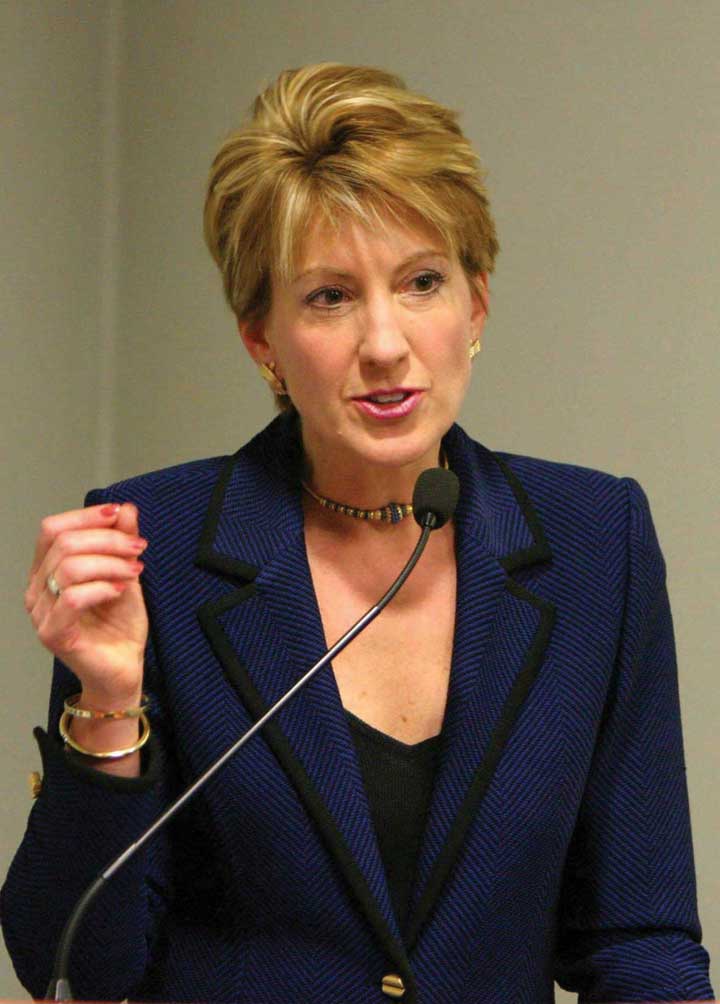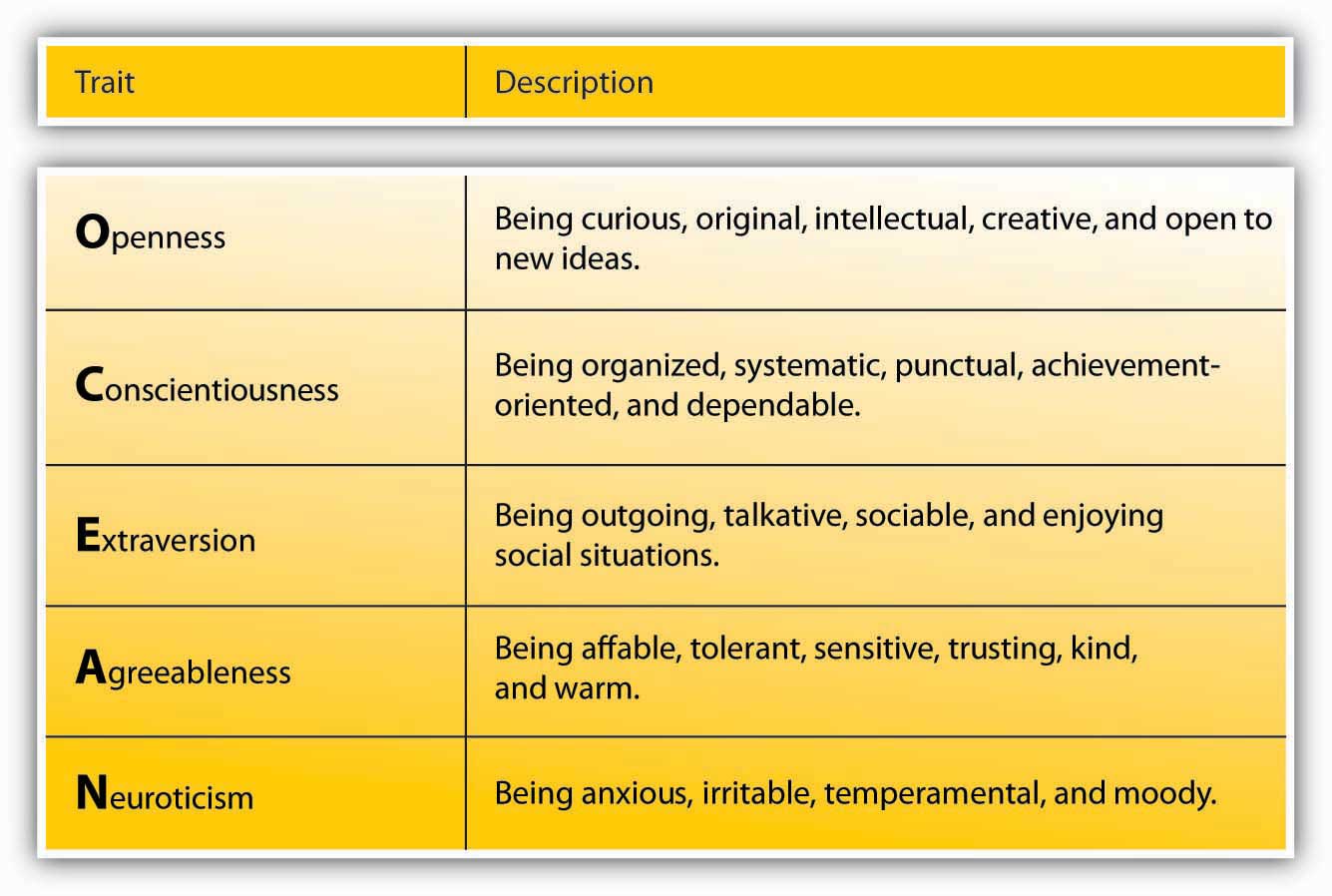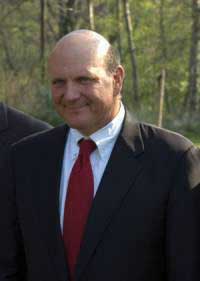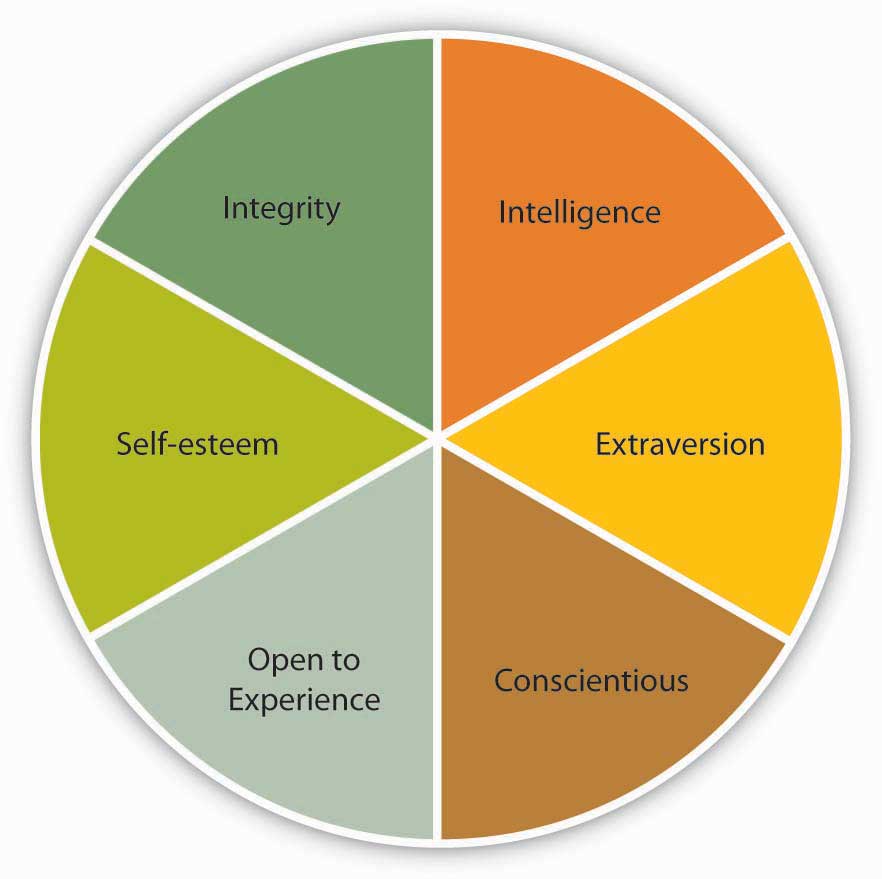) Personality and Leadership a Qualitative and Quantitative Review
12.2 Who Is a Leader? Trait Approaches to Leadership
Learning Objectives
- Learn the position of trait approaches in the history of leadership studies.
- Explain the traits that are associated with leadership.
- Discuss the limitations of trait approaches to leadership.
The earliest approach to the study of leadership sought to identify a set of traits that distinguished leaders from nonleaders. What were the personality characteristics and the physical and psychological attributes of people who are viewed as leaders? Because of the problems in measurement of personality traits at the fourth dimension, different studies used different measures. By 1940, researchers concluded that the search for leadership-defining traits was futile. In recent years, though, afterward the advances in personality literature such as the development of the Big V personality framework, researchers take had more success in identifying traits that predict leadership.House, R. J., & Aditya, R. N. (1997). The social scientific study of leadership: Quo Vadis? Journal of Management, 23, 409–473. Nigh importantly, charismatic leadership, which is amidst the contemporary approaches to leadership, may exist viewed as an example of a trait arroyo.
The traits that testify relatively strong relations with leadership are discussed below.Judge, T. A., Bono, J. E., Ilies, R., & Gerhardt, Grand. W. (2002). Personality and leadership: A qualitative and quantitative review. Periodical of Applied Psychology, 87, 765–780.
Intelligence
Figure 12.2

Many observers believe that Carly Fiorina, the ousted CEO of HP, demonstrated high levels of intelligence but depression levels of empathy for the people around her, which led to an overreliance on numbers while ignoring the homo price of her decisions.Karlgaard, R. (2002, February 18). Vote Carly. Forbes, 169(4), 37.
Full general mental ability, which psychologists refer to as "g" and which is oftentimes called "IQ" in everyday language, has been related to a person's emerging as a leader within a group. Specifically, people who accept high mental abilities are more probable to be viewed equally leaders in their environs.House, R. J., & Aditya, R. North. (1997). The social scientific written report of leadership: Quo Vadis? Journal of Management, 23, 409–473; Ilies, R., Gerhardt, M. Due west., & Huy, Fifty. (2004). Individual differences in leadership emergence: Integrating meta-analytic findings and behavioral genetics estimates. International Journal of Selection and Assessment, 12, 207–219; Lord, R. G., De Vader, C. Fifty., & Alliger, M. M. (1986). A meta-analysis of the relation between personality traits and leadership perceptions: An application of validity generalization procedures. Journal of Applied Psychology, 71, 402–410; Taggar, S., Hackett, R., & Saha, Southward. (1999). Leadership emergence in autonomous work teams: Antecedents and outcomes. Personnel Psychology, 52, 899–926. Nosotros should caution, though, that intelligence is a positive but modest predictor of leadership, and when actual intelligence is measured with newspaper-and-pencil tests, its relationship to leadership is a bit weaker compared to when intelligence is defined equally the perceived intelligence of a leader.Guess, T. A., Colbert, A. E., & Ilies, R. (2004). Intelligence and leadership: A quantitative review and test of theoretical propositions. Periodical of Applied Psychology, 89, 542–552. In addition to having a loftier IQ, effective leaders tend to have loftier emotional intelligence (EQ). People with loftier EQ demonstrate a high level of self awareness, motivation, empathy, and social skills. The psychologist who coined the term emotional intelligence, Daniel Goleman, believes that IQ is a threshold quality: It matters for entry- to high-level management jobs, but once you lot get there, it no longer helps leaders, because most leaders already have a loftier IQ. According to Goleman, what differentiates effective leaders from ineffective ones becomes their ability to control their own emotions and understand other people's emotions, their internal motivation, and their social skills.Goleman, D. (Jan, 2004). What makes a leader? Harvard Business Review, 82(1), 82–91.
Big 5 Personality Traits
Psychologists have proposed diverse systems for categorizing the characteristics that make up an individual's unique personality; 1 of the most widely accepted is the "Large Five" model, which rates an individual according to Openness to feel, Conscientiousness, Extraversion, Agreeableness, and Neuroticism. Several of the Large Five personality traits have been related to leadership emergence (whether someone is viewed as a leader by others) and effectiveness.Judge, T. A., Bono, J. E., Ilies, R., & Gerhardt, M. W. (2002). Personality and leadership: A qualitative and quantitative review. Periodical of Applied Psychology, 87, 765–780.
Figure 12.3 Large 5 Personality Traits

Figure 12.4

Steve Ballmer, CEO of Microsoft Corporation, is an extraverted leader. For example, to gloat Microsoft'southward 25th anniversary, Ballmer enthusiastically popped out of the anniversary cake to surprise the audience.
For example, extraversion is related to leadership. Extraverts are sociable, assertive, and energetic people. They enjoy interacting with others in their environment and demonstrate self-confidence. Because they are both ascendant and sociable in their environment, they emerge every bit leaders in a wide variety of situations. Out of all personality traits, extraversion has the strongest relationship with both leader emergence and leader effectiveness. This is not to say that all effective leaders are extraverts, but you are more than likely to find extraverts in leadership positions. An instance of an introverted leader is Jim Buckmaster, the CEO of Craigslist. He is known every bit an introvert, and he admits to not having meetings because he does not like them.Buckmaster, J. (2008, May). How does he manage? Classified website boss. Management Today, 15. Research shows that another personality trait related to leadership is conscientiousness. Conscientious people are organized, take initiative, and demonstrate persistence in their endeavors. Careful people are more likely to emerge equally leaders and be effective in that role. Finally, people who have openness to experience—those who demonstrate originality, creativity, and are open to trying new things—tend to emerge as leaders and besides be quite effective.
Cocky-Esteem
Cocky-esteem is not 1 of the Large V personality traits, only it is an of import aspect of one's personality. The degree to which a person is at peace with oneself and has an overall positive assessment of one's cocky worth and capabilities seem to be relevant to whether someone is viewed as a leader. Leaders with high self-esteem support their subordinates more and, when punishment is administered, they punish more effectively.Atwater, L. E., Dionne, Southward. D., Camobreco, J. F., Avolio, B. J., & Lau, A. (1998). Individual attributes and leadership style: Predicting the utilise of penalization and its effects. Journal of Organizational Behavior, 19, 559–576; Niebuhr, R. E., & Davis, Chiliad. R. (1984). Self-esteem: Relationship with leader behavior perceptions as moderated past the duration of the superior-subordinate dyad clan. Personality and Social Psychology Bulletin, ten, 51–59. It is possible that those with high cocky-esteem accept greater levels of self-confidence and this affects their paradigm in the eyes of their followers. Self-esteem may too explicate the relationship between some physical attributes and leader emergence. For example, inquiry shows a strong relationship between being tall and beingness viewed equally a leader (every bit well as 1'south career success over life). It is proposed that self-esteem may be the key mechanism linking height to existence viewed as a leader, because people who are taller are as well institute to accept higher cocky-esteem and therefore may project greater levels of charisma likewise as conviction to their followers.Judge, T. A., & Cable, D. M. (2004). The effect of physical height on workplace success and income: Preliminary test of a theoretical model. Journal of Applied Psychology, 89, 428–441.
Integrity
Inquiry also shows that people who are effective as leaders tend to have a moral compass and demonstrate honesty and integrity.Reave, L. (2005). Spiritual values and practices related to leadership effectiveness. Leadership Quarterly, sixteen, 655–687. Leaders whose integrity is questioned lose their trustworthiness, and they hurt their company'southward business concern along the manner. For instance, when it was revealed that Whole Foods Market CEO John Mackey was using a pseudonym to make negative comments online about the company's rival Wild Oats Markets Inc., his deportment were heavily criticized, his leadership was questioned, and the company's reputation was affected.Farrell, M., & Davidson, P. (2007, July thirteen). Whole Foods' CEO was busy guy online. United states of america Today, Money section, p. 04B.
Figure 12.5 Cardinal Traits Associated With Leadership

There are also some traits that are negatively related to leader emergence and beingness successful in that position. For example, agreeable people who are minor, skilful natured, and avoid conflict are less likely to be perceived every bit leaders.Judge, T. A., Bono, J. Due east., Ilies, R., & Gerhardt, M. W. (2002). Personality and leadership: A qualitative and quantitative review. Periodical of Applied Psychology, 87, 765–780.
Figure 12.vi

Condoleezza Rice had unlike responsibilities as the provost of Stanford University compared to her office as secretary of state for the U.s.. Practise y'all think these differences afflicted her beliefs as a leader?
Despite problems in trait approaches, these findings tin can still be useful to managers and companies. For instance, knowing about leader traits helps organizations select the right people into positions of responsibility. The key to benefiting from the findings of trait researchers is to be enlightened that not all traits are equally constructive in predicting leadership potential beyond all circumstances. Some organizational situations allow leader traits to brand a greater departure.House, R. J., & Aditya, R. N. (1997). The social scientific study of leadership: Quo Vadis? Journal of Management, 23, 409–473. For example, in small, entrepreneurial organizations where leaders have a lot of leeway to decide their own behavior, the type of traits leaders have may make a difference in leadership potential. In large, bureaucratic, and dominion-jump organizations such every bit the government and the military, a leader's traits may accept less to do with how the person behaves and whether the person is a successful leader.Judge, T. A., Bono, J. E., Ilies, R., & Gerhardt, Grand. W. (2002). Personality and leadership: A qualitative and quantitative review. Journal of Applied Psychology, 87, 765–780. Moreover, some traits become relevant in specific circumstances. For instance, bravery is probable to be a cardinal characteristic in military leaders, simply not necessarily in business organisation leaders. Scholars now conclude that instead of trying to place a few traits that distinguish leaders from nonleaders, it is important to place the conditions under which different traits bear upon a leader'south functioning, also equally whether a person emerges as a leader.Hackman, J. R., & Wageman, R. (2007). Asking the correct questions about leadership: Discussion and conclusions. American Psychologist, 62, 43–47.
Fundamental Takeaway
Many studies searched for a limited set of personal attributes, or traits, which would brand someone be viewed equally a leader and be successful as a leader. Some traits that are consistently related to leadership include intelligence (both mental ability and emotional intelligence), personality (extraversion, conscientiousness, openness to experience, self-esteem), and integrity. The master limitation of the trait approach was that it ignored the situation in which leadership occurred. Therefore, it is more useful to specify the conditions nether which dissimilar traits are needed.
Exercises
- Think of a leader you admire. What traits does this person have? Are they consistent with the traits discussed in this affiliate? If not, why is this person effective despite the presence of unlike traits?
- Tin can the findings of traits approaches exist used to train potential leaders? Which traits seem easier to teach? Which are more stable?
- How can organizations identify future leaders with a given prepare of traits? Which methods would be useful for this purpose?
- What other traits can you think of that would be relevant to leadership?
Source: https://saylordotorg.github.io/text_organizational-behavior-v1.1/s16-02-who-is-a-leader-trait-approach.html
0 Response to ") Personality and Leadership a Qualitative and Quantitative Review"
Post a Comment